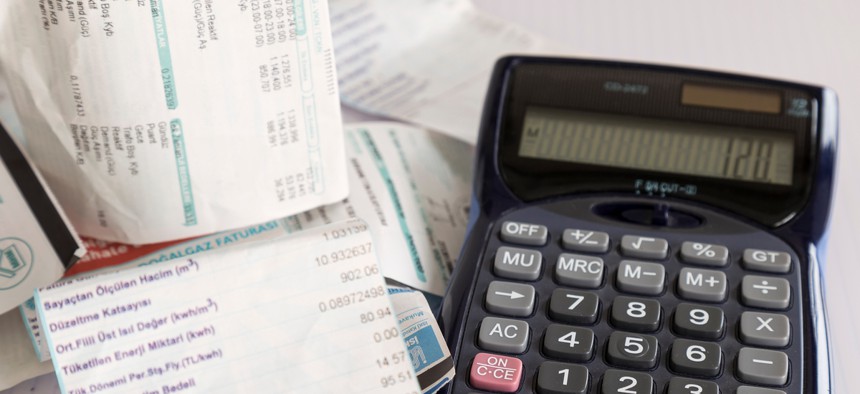Economic Boom Hasn't Led to Economic Prosperity For All

More than 32 percent of survey participants reported experiencing at least one type of financial insecurity in the last 12 months. Shutterstock
New research suggests that about a third of Americans struggle with financial security, including many who would be considered middle class.
A third of Americans with moderate incomes faced some financial insecurity in 2017 despite low unemployment rates and a flourishing economy, according to new research from the nonprofit Urban Institute.
“Slow income growth and rising health-care and housing costs challenge the economic security of low- and moderate-income families,” says the recently released report. “Despite the country’s recent economic prosperity, many families, including many middle-income families, fear they will not have enough resources to maintain financial stability.”
Researchers surveyed more than 7,500 adults between the ages of 18 and 64 on two measures of financial distress. The first, financial insecurity, looked at respondents’ ability to “come up with a small amount of money to buffer negative economic shocks” or to pay monthly bills, including credit card balances and non-mortgage loan payments. The second measure gauged respondents’ use of “alternative financial services” to bridge temporary cash shortages, including payday loans, auto title loans or selling items at pawn shops.
More than 32 percent of survey participants reported experiencing at least one type of financial insecurity in the last 12 months. Fourteen percent of adults had been contacted by a debt collector, while 13 percent had missed a payment on a credit card or a non-mortgage loan. Nearly a quarter of them—22 percent—”were not confident they could come up with $400 for an unexpected expense.”
Likewise, about 12 percent of respondents had used an “alternative financial service” in the past year. Nearly 6 percent had sold items at a pawn shop, while 5.6 percent had taken out a payday loan and 3.7 percent had taken out an auto title loan. This, more than other metrics, showed the severity of financial constraints at play for respondents, researchers wrote.
“Parting with valuables can be a last resort for adults and families who have few other options when faced with pressing financial or material hardships, such as paying a past-due bill or making an urgent car repair,” the report says.
Young adults, unmarried people and black and Hispanic adults were more likely to access those services and to experience financial insecurity in general. Women also experience significantly more financial insecurity than men, according to the data.
“Even a relatively strong economy may not be enough to close financial gaps to produce comparable rates of financial stability for disadvantaged groups,” the report says.
And while families in poverty are more likely to experience financial hardship, households with higher incomes also struggle with financial distress. About 20 percent of families with incomes between 200 and 399 percent of the federal poverty level—$40,480 to $81,680 for a family of three—do not feel certain that they could produce $400 for an unexpected expense, and nearly 34 percent of those families experience some form of financial insecurity.
Policies, including financial coaching and employer-incentivized saving, could help combat financial distress, researchers concluded.
“Raising incomes could also lead to more financial security,” they wrote. “Although our brief shows that even low- to moderate-income adults experience financial distress, the degree of distress decreases with movement up the income ladder.”
Other potential solutions include expanding the earned income tax credit and buffering low unemployment rates with “policies that continue to advance employment and earnings for women and people of color, such as universal pre-K, expanded family leave, equal opportunity employment protections, and minimum wage increases.”
Kate Elizabeth Queram is a Staff Correspondent for Route Fifty and is based in Washington, D.C.
NEXT STORY: Frequent Shutdown Threats Prompt State and Local Safeguards





